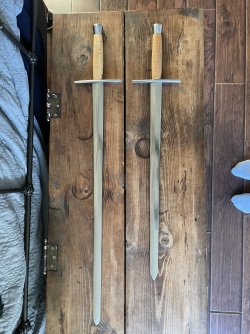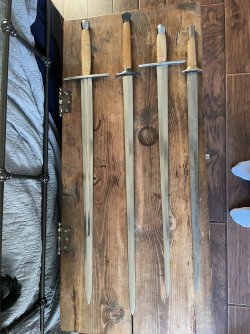Oily Dragon
Senior Master
- Joined
- May 2, 2020
- Messages
- 3,257
- Reaction score
- 1,651
OK, Sword nerd time.
劍 means "a unified knife", and "jian" is close to Trans-Himalayan for "sharp". The unifying factor all of jian type weapons in China is the poke. These swords, while double edged, are not meant for slashing, but for thrusting. Much like the rapier, unless I'm wrong.
劍 means "a unified knife", and "jian" is close to Trans-Himalayan for "sharp". The unifying factor all of jian type weapons in China is the poke. These swords, while double edged, are not meant for slashing, but for thrusting. Much like the rapier, unless I'm wrong.



